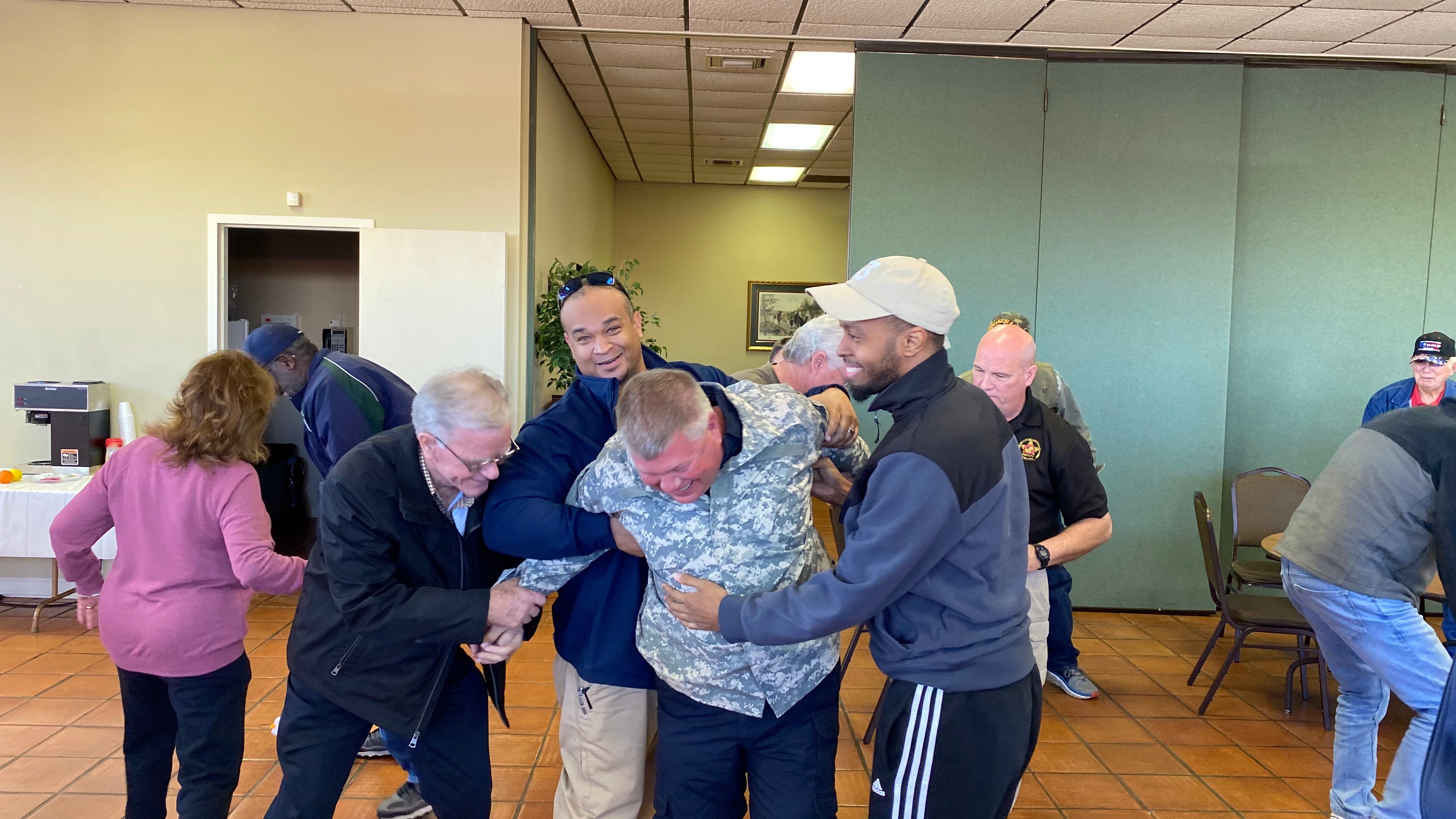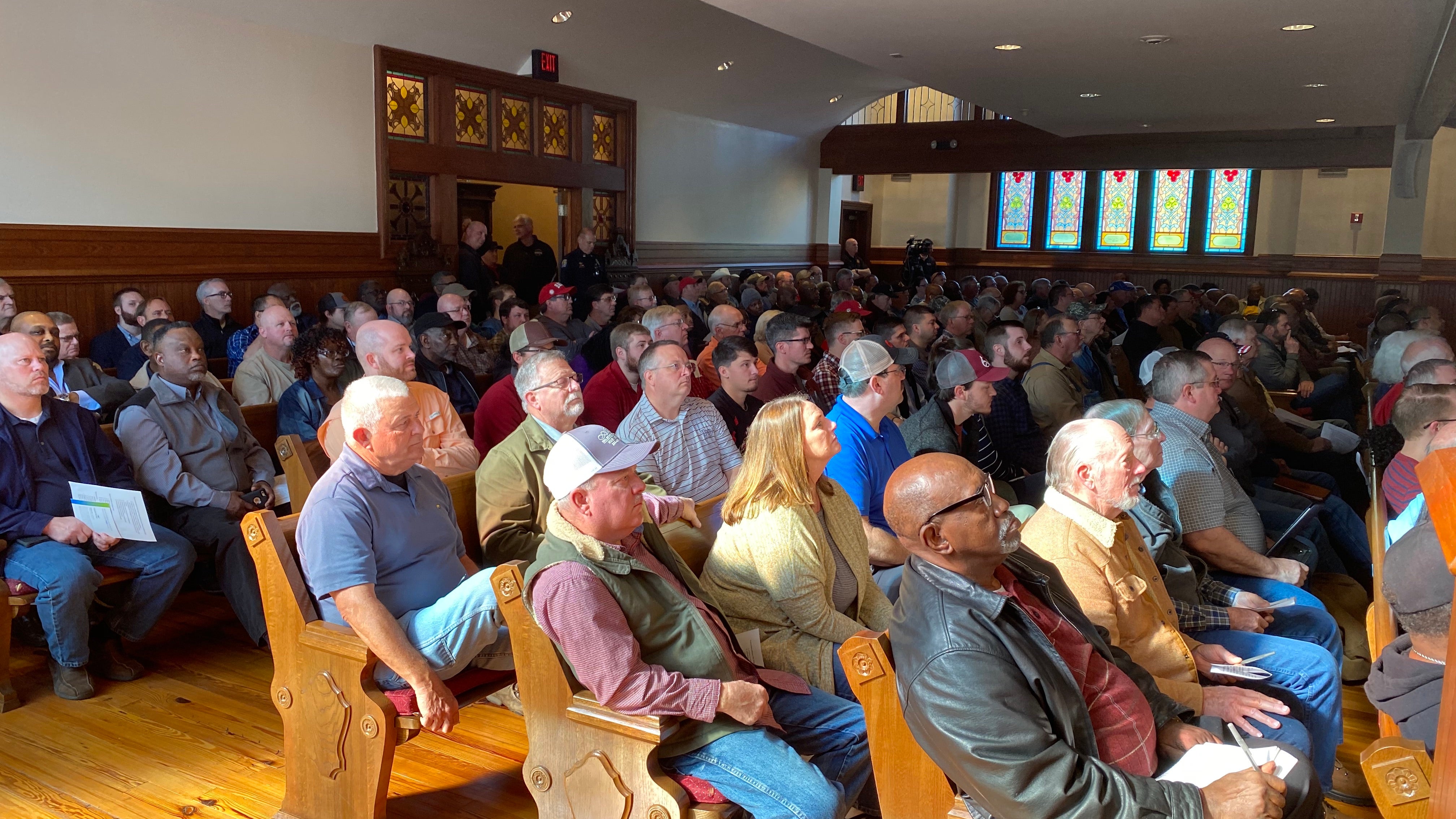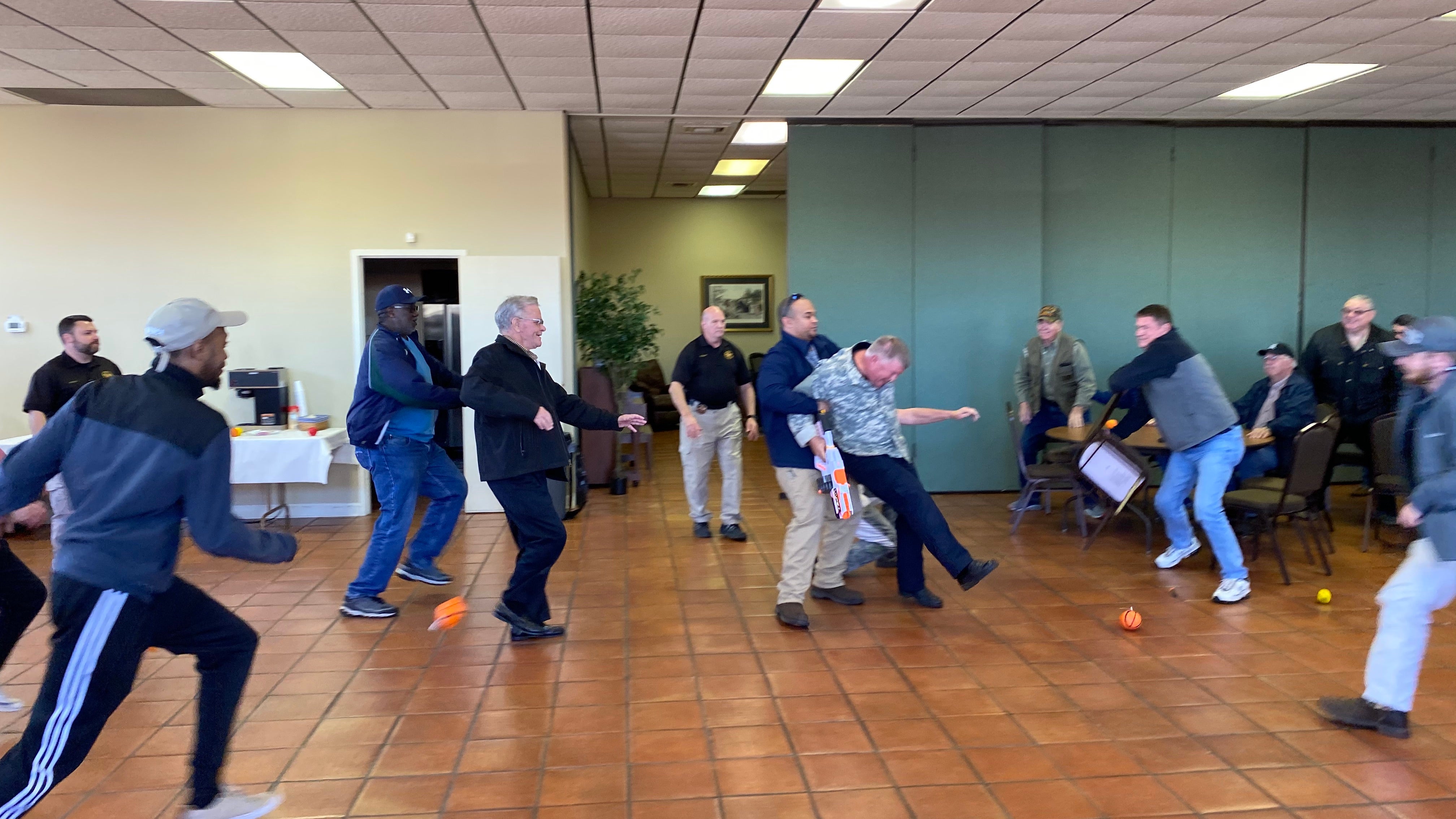Church leaders receive active shooter training at safety summit
Published 9:14 pm Monday, March 2, 2020
|
Getting your Trinity Audio player ready...
|
Church leaders huddled together under tables Saturday morning at First Baptist Church while Kevin Childs strolled around the fellowship hall with a gun shouting “everyone stay down.”
The gun was a Nerf gun and Childs is a deputy of the Pike County Sheriff’s Office – the drill was designed to make the church leaders feel the helplessness of the old technique of hiding in place while an active shooter takes control of the situation.
“Columbine changed everything as far as how we respond and how we teach civilians to respond,” said Sgt. Debbie Sumrall of the Shelby County Sheriff’s Office, speaking to the full crowd of more than 350 people in the FBC sanctuary.
At the time of Columbine, the resource officer there engaged the shooters outside and then waited for SWOT to arrive instead of going into help during the 45 minutes of violence that took place. But Sumrall said that was the way officers were trained to respond up to that time.
Sumrall told the church leaders that the key to civilian training is changing the mindset of how they respond when an incident is occurring.
“Everybody goes through a process of denial, deliberation and that decisive moment,” Sumrall said. “Studies have shown that the survivors of incidents like this go through that process faster. This training is designed to help you go through that process faster.”
The training taught members the ALICE approach to active shooter situations: alert, lockdown, inform, counter and evacuate.
Sumrall said the steps are not in any order, but provide the options when facing an active shooter threat.
“With an active shooter, you want to always get out if you can,” Sumrall said.
The first step is to be alert and aware, Sumrall said. Everybody goes through a denial of what’s happening at first, even law enforcement officers, but getting through that quickly improves chances of survival.
Once aware of the situation, the next step is to decide on the best option. In some cases that is to “lock down” the area, but Sumrall noted the key is to lock intruders out, not to lock the congregation in.
“By locking down or barricading, you’re preparing to counter or find a way to get out, you’re buying yourself time,” Sumrall said. “You’re putting yourself at a tactical advantage.”
As far as locking down church spaces, Sumrall said each church team will have to plan that out individually based on their church space needs.
When it comes to informing others of the situation, Sumrall advised to use plain language instead of code words or signals.
“You’re not telling the shooter anything he doesn’t already know but you’re giving your people a better chance,” Sumrall said.
Sumrall discussed several options to counter such as throwing objects at the shooter to disrupt their aim and focus and to possibly harm them. Swarming a shooter can also help keep others safe.
“It’s a personal choice each individual has to make,” Sumrall said.
The church members also got information from the Columbine and Sandy Hook shootings as examples of the differences made based on different responses.
The church members got the chance to practice this method as well, as a “shooter” entered the staging area armed with a Nerf gun and the participants armed with “plates” (soft toy balls) to disrupt the shooter before ultimately swarming him and restraining him.
A third drill had church members seek to evacuate a large space quickly or barricade an entry point.
“This was one of the best things I’ve been associated with as my 26 years as a sheriff,” said Sheriff Russell Thomas. “The training and hands-on information provided was very beneficial to everyone and we’ve received a tremendous amount of positive feedback. I thank everyone who came out and participated and supported the event with special thanks to Shelby County Sheriff’s Office, First Baptist Church and Geoffrey Spann.”
Thomas said his office expects o provide more training for churches to come.









